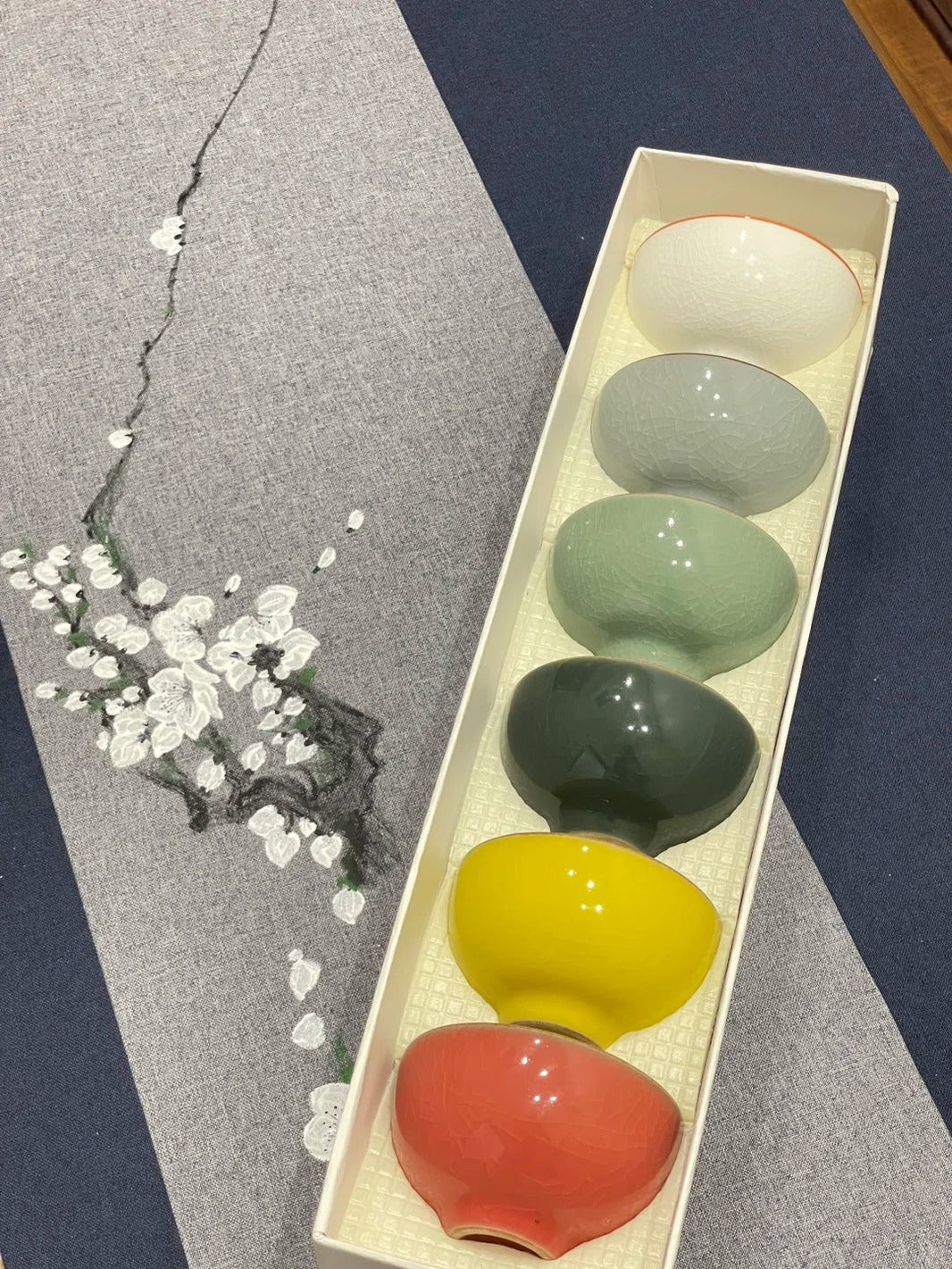Jianzhan(teacup): A Song Dynasty Treasure Among Black-Glazed Porcelains
Jianzhan, one of the Eight Great Porcelains of the Song Dynasty, is named after Jianyang (formerly known as Jianzhou), Fujian Province, where it was produced. Its thick body, dark, predominantly black glaze, unique natural crystal patterns, and rich historical and cultural background have made it a significant representative of Chinese ceramic art.
1. The Historical Origin of Jianzhan(teacup)
Jianzhan teapot production began in the late Tang Dynasty and flourished during the Song Dynasty. During the Song Dynasty, tea-making and tea-drinking competitions were popular. Jianzhan, with its deep black glaze that accentuated the tea soup's color and foam, became the preferred teaware for competitions among the royal family and the literati.
According to the "Daguan Cha Lun," Emperor Huizong of Song was extremely particular about tea making and teacups. Jianzhan teacups even became a type of "tribute porcelain" at the time, exclusively for use by the imperial court. After the fall of the Song Dynasty, Jianzhan teacups gradually declined in popularity, only to be rediscovered and successfully re-fired in modern times.
2. Typical characteristics of Jianzhan (teacup)
Jianzhan is a black-glazed porcelain with the following notable features:
-
Black body and thick glaze : based on body soil with high iron content, the glaze layer is thick.
-
High temperature firing : It is fired at a high temperature of more than 1300℃, which is a reducing atmosphere firing process.
-
Hand-thrown pottery : Traditional craftsmanship mostly involves pure hand-molding, preserving the original ceramic charm.
-
Natural crystalline glaze : The glaze pattern is naturally generated under high temperature and atmosphere changes and cannot be replicated.
The most representative glaze patterns of Jianzhan include:
-
Rabbit hair pattern : thin and silky stripes, shaped like rabbit hair;
-
Oil drop pattern : metallic luster dots are formed on the glaze surface, like oil droplets splashing;
-
Yaobian pattern : It presents rainbow luster or star-like colorful changes, which is extremely rare;
-
Partridge spots, tiger spots, etc .: Some modern innovative styles also have names such as nebula and galaxy.
3. The cultural value of Jianzhan (teacup)
Jianzhan is not only a practical tea utensil, but also carries rich cultural connotations:
1. The carrier of tea culture
Jianzhan is one of the important utensils for "tea making" and "tea fighting" in the Song Dynasty. Its dark inner wall can highlight the color of the tea soup and the appearance of the foam, and it is known as the "first utensil for tea fighting."
2. The embodiment of Zen aesthetics
Jianzhan teapots have calm colors and natural patterns, with the Zen beauty of "painting without painting". They are in line with the Eastern philosophical concept of "Tao follows nature" and have always been highly praised by literati and Zen monks.
3. Art and collection value
The glaze of Jianzhan teapots naturally changes under high temperatures, making each one unique. In recent years, Jianzhan teapots have gradually become a hot topic in the ceramic collection community, and their artistic and market value have continued to rise.
4. Use and maintenance of Jianzhan (teacup)
Although Jianzhan is strong and durable, if you want it to maintain its luster and texture integrity for a long time, you still need to pay attention to the following points in daily use:
(1) Before use
-
Rinse with warm water to remove any dust or glaze residue on the surface;
-
You can choose to "open the cup": repeatedly moisturize it with hot tea to improve the moistness of the glaze.
(2) In use
-
Avoid sudden cooling and heating to prevent glaze cracking caused by thermal expansion and contraction;
-
Do not use for heating on open flames, induction cookers, or microwave ovens;
-
Avoid storing acidic or alkaline beverages for a long time.
(3) After use
-
It is recommended to rinse with clean water and avoid using detergent as much as possible;
-
Wipe dry with a soft cloth and keep it dry, especially the bare base at the bottom of the cup, to prevent alkali regeneration or mildew.
(4) Culture of raising lamps
The so-called "nurturing the teacup" means nourishing the Jian teacup with tea in daily use, so that its glaze becomes more lustrous and the patterns become clearer over time.
-
Long-term use of the same type of tea (such as green tea, lightly fermented oolong);
-
Avoid frequent scrubbing and strong acid cleaning.
5. Modern Development of Jianzhan (teacup)
With the revival of Jianzhan culture, traditional craftsmanship in places like Jianyang, Fujian, has been inherited and innovated. While retaining traditional craftsmanship, modern Jianzhan has seen the emergence of new styles such as the "Starry Sky" (Xingchen Zhan), the "Golden Yao Zhan" (Yaojin Zhan), and the "Illusionary Color Zhan" (Huancai Zhan), which both meet functional needs and adapt to contemporary aesthetics.
In addition, Jianzhan has gradually spread to the world and become one of the important representatives of Chinese tea culture, and is favored by more and more international tea lovers and collectors.
Conclusion
Jianzhan is both an artifact and a continuation of history. It bears witness to the elegance of Song Dynasty tea-drinking competitions and embodies the essence of Eastern aesthetics. In the ebb and flow of a cup of tea, Jianzhan tells a story of fire and earth, time and temperature. Whether used for daily tea drinking or as a collector's item, Jianzhan, with its unique charm, continues the legend of the millennia-old kiln fire.






